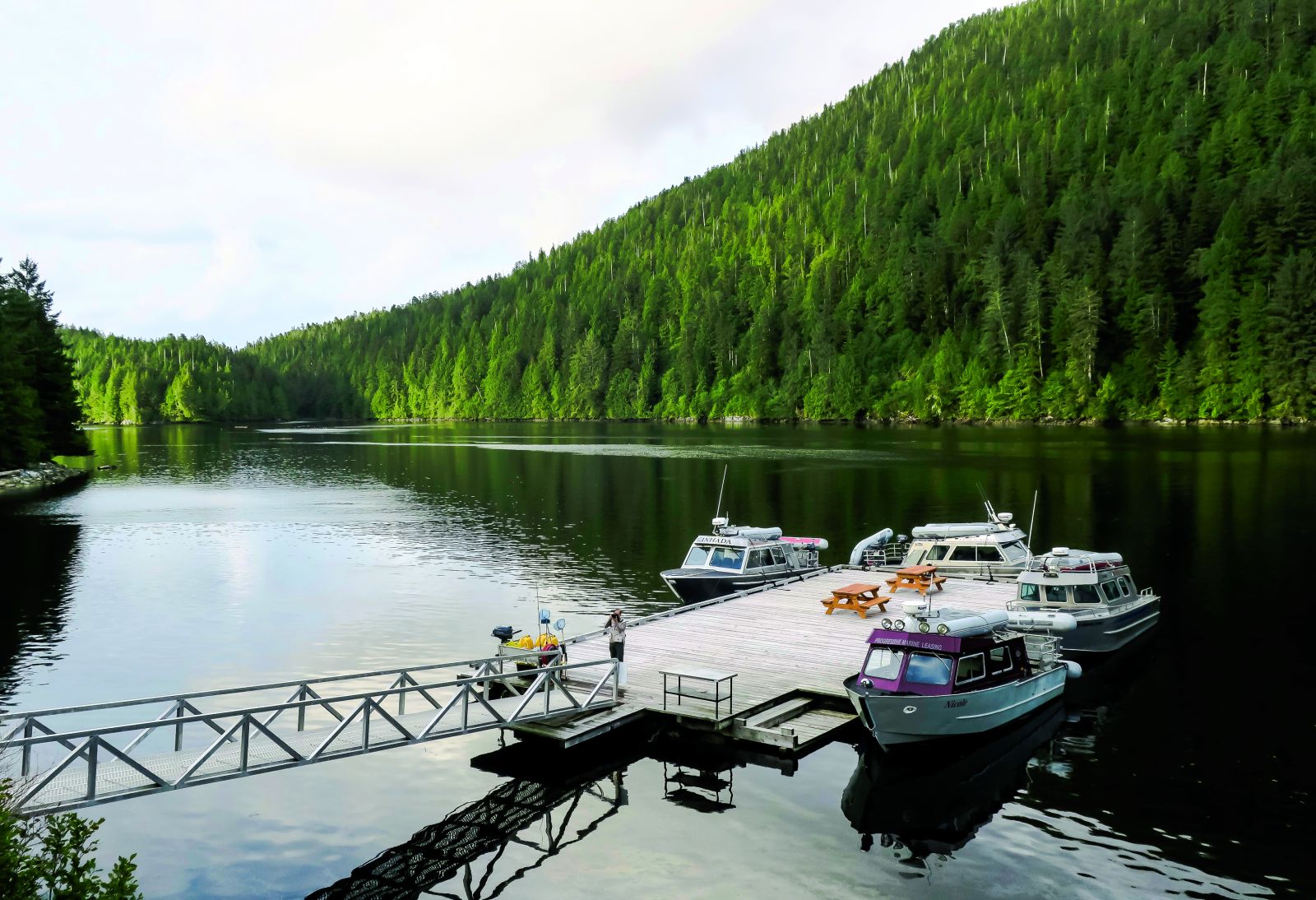Two years ago, a friend of mine, an American wildlife photographer, told me about a rare subspecies of black bear which could be found only in the Great Bear Rainforest in Canada. It was the Kermode bear, popularly known as the spirit bear. This rainforest is the only place in the world where 10 percent of the black bear is born with an almost totally white coat. The latest survey has shown that there are about 400 spirit bears inhabiting the Great Bear Rainforest, the largest rainforest in North America with an area of 64,000 sq.km, located approximately 609 kilometres away from Vancouver, the most populous city on the west coast of Canada.
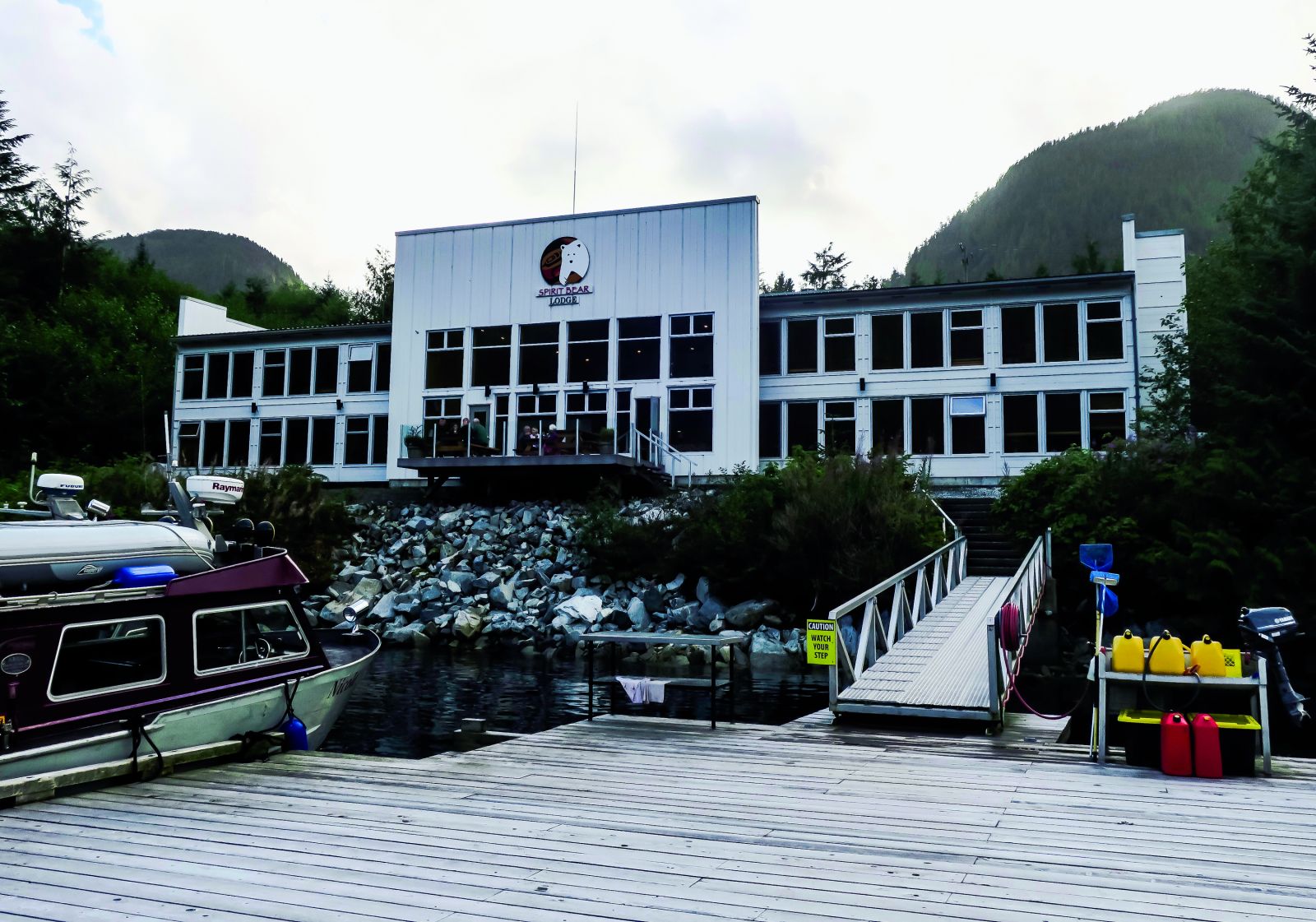
Spirit Bear Lodge
Such casual conversation immediately sparked my adventurous soul into planning a long trip halfway around the world from Bangkok to Vancouver. It took me two years to do the research on the Great Bear Rainforest and its extraordinary wildlife species to develop a plan to find and photograph the spirit bear in its habitat. I learned that the best time to spot the spirit bear is during the salmon run which usually takes place from the middle of August to early October.
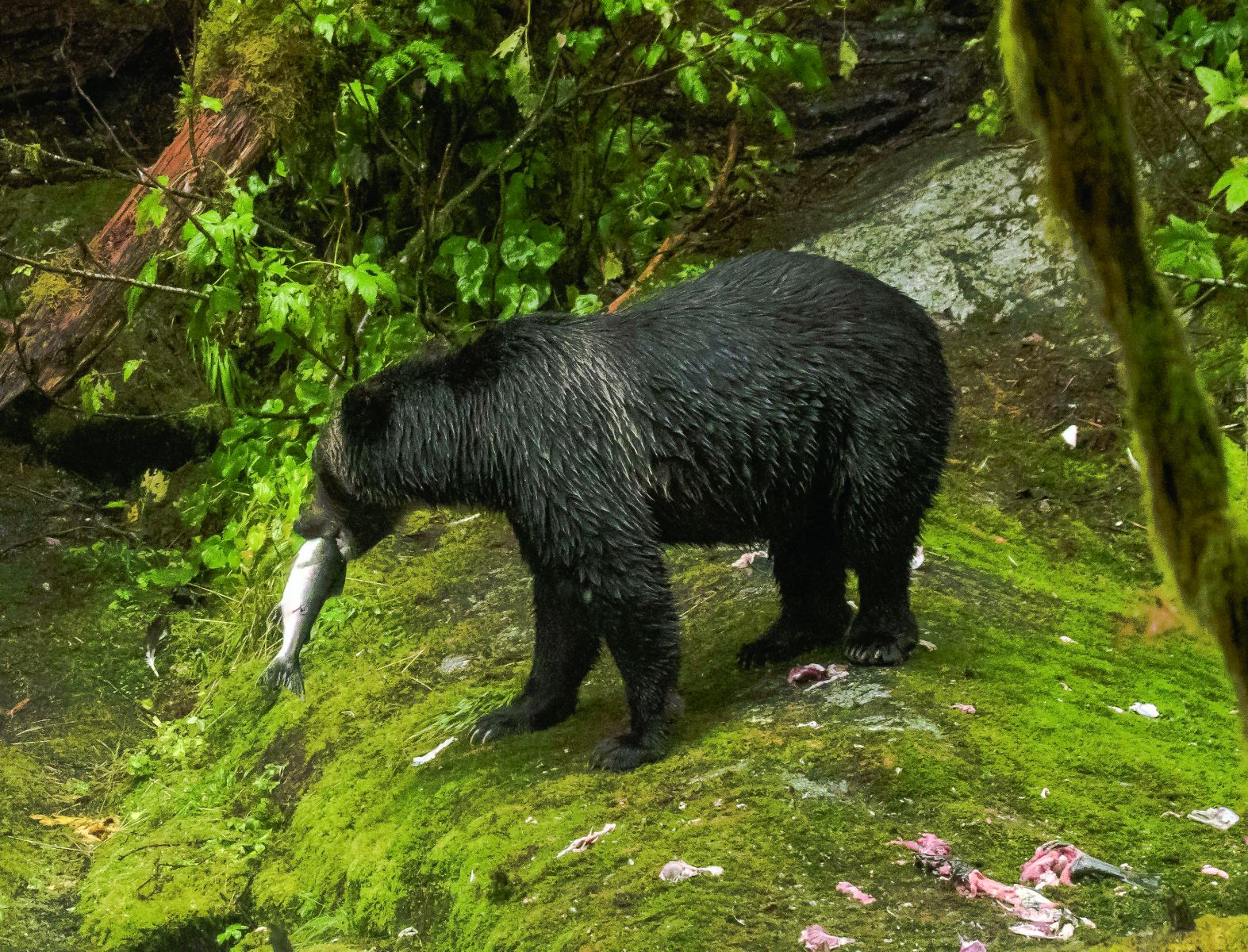
The salmon run is an annual natural happening in which millions of salmon in the Pacific and Atlantic oceans return to their natal areas on the coasts
The salmon run is an annual natural happening in which millions of salmon in the Pacific and Atlantic oceans return to their natal areas on the coasts. They were born and spent their early life in fresh water rivers and lakes before they swam out to sea to live their adult life until the final stage of their lifespan when they return to spawn and die. During this season, several species of predators - bears, sea lions, seals, otters, and bald eagles - gather along the estuaries and rivers to prey on those salmon. The opportunity to personally witness and photograph this scenario of these predators preying on the salmon prompted my decision to travel to the Great Bear Rainforest.
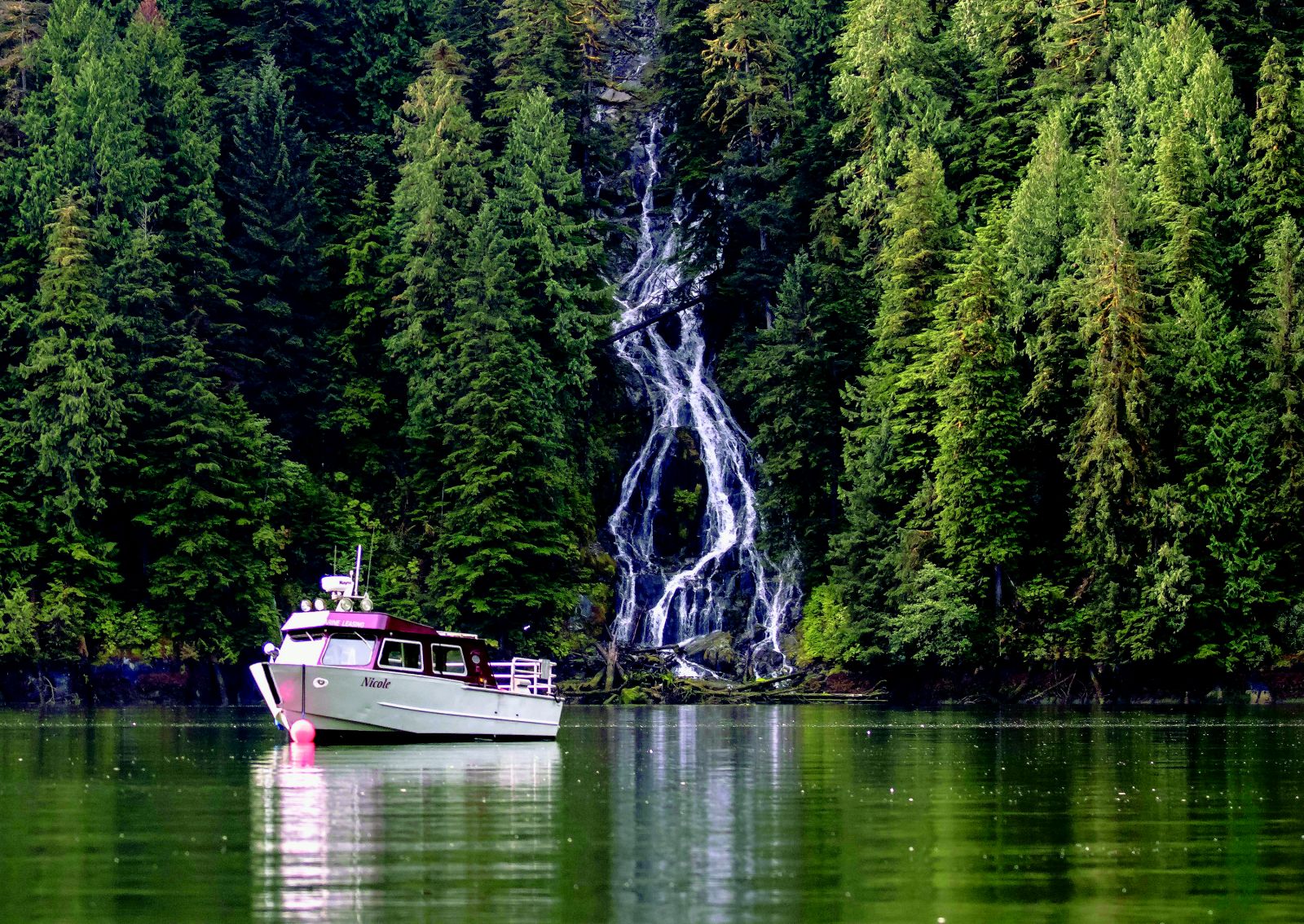
Further research showed that the government of British Columbia has made an agreement with the Kitasoo/Xai’xais tribes jointly known as the First Nations to manage their traditional lands of 3,939 sq.km. of the rainforest as a protected area known as the Kitasoo/Xai’xais Spirit Bear Conservancy. While searching for accommodation in the Great Bear Rainforest, a friend who had visited the rainforest strongly recommended the Spirit Bear Lodge in Klemtu owned and managed by the Kitasoo/Xai’xais people. I was fortunate to find a vacancy in the last week of August 2019, which was the beginning of the salmon run.
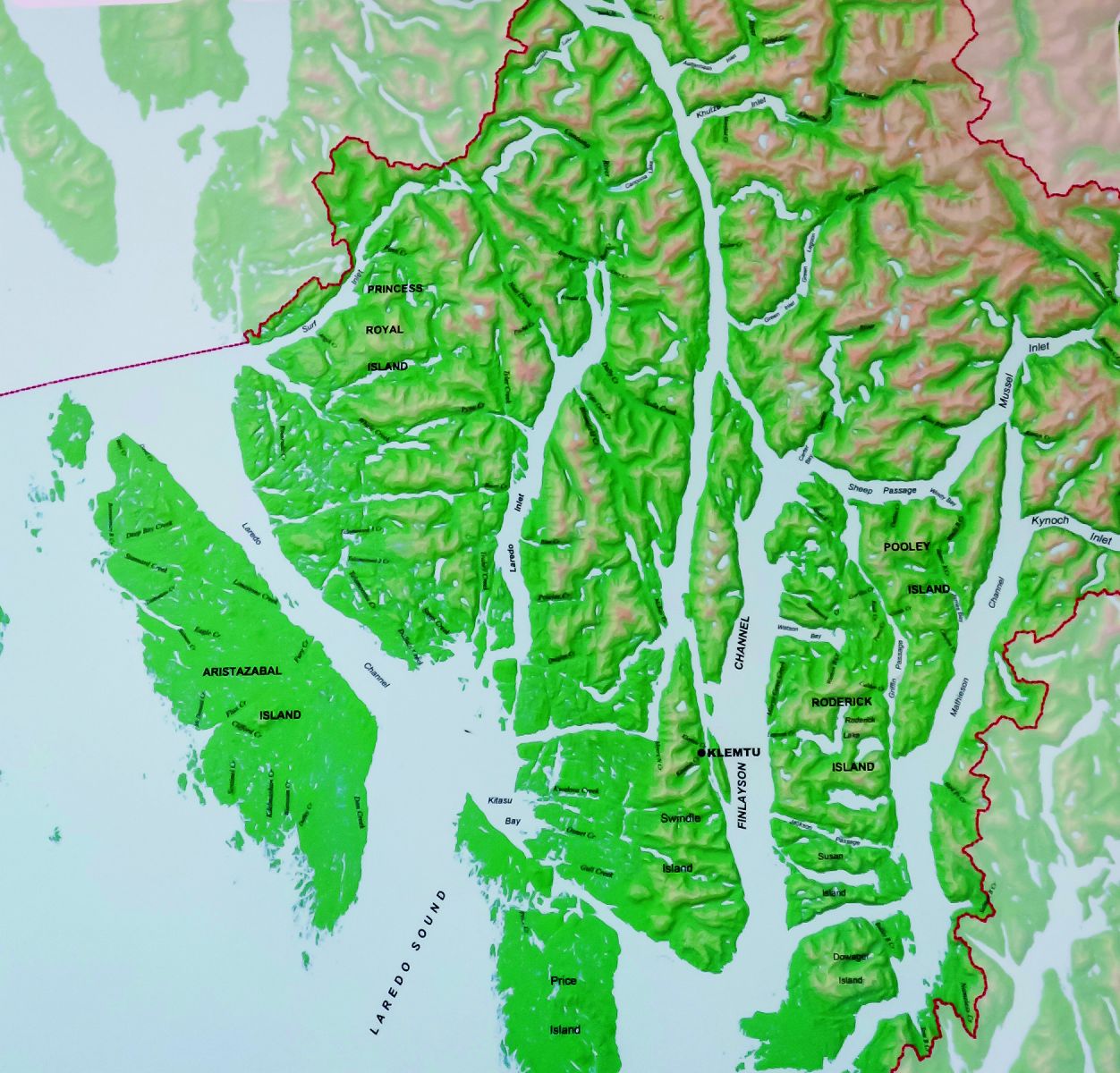
Map of Great Bear Rainforest
I flew from Bangkok, crossing the Pacific Ocean, to Vancouver. After an overnight stay, the next morning I took a domestic flight from Vancouver to Bella Bella, a small town located in the middle of the Great Bear Rainforest. The Spirit Bear Lodge sent a motor boat to meet me and the lodge’s other guests at the airport. The pleasant boat ride through the calm estuaries passing the pristine and beautiful wilderness took one hour and a half to reach the Spirit Bear Lodge in Klemtu.
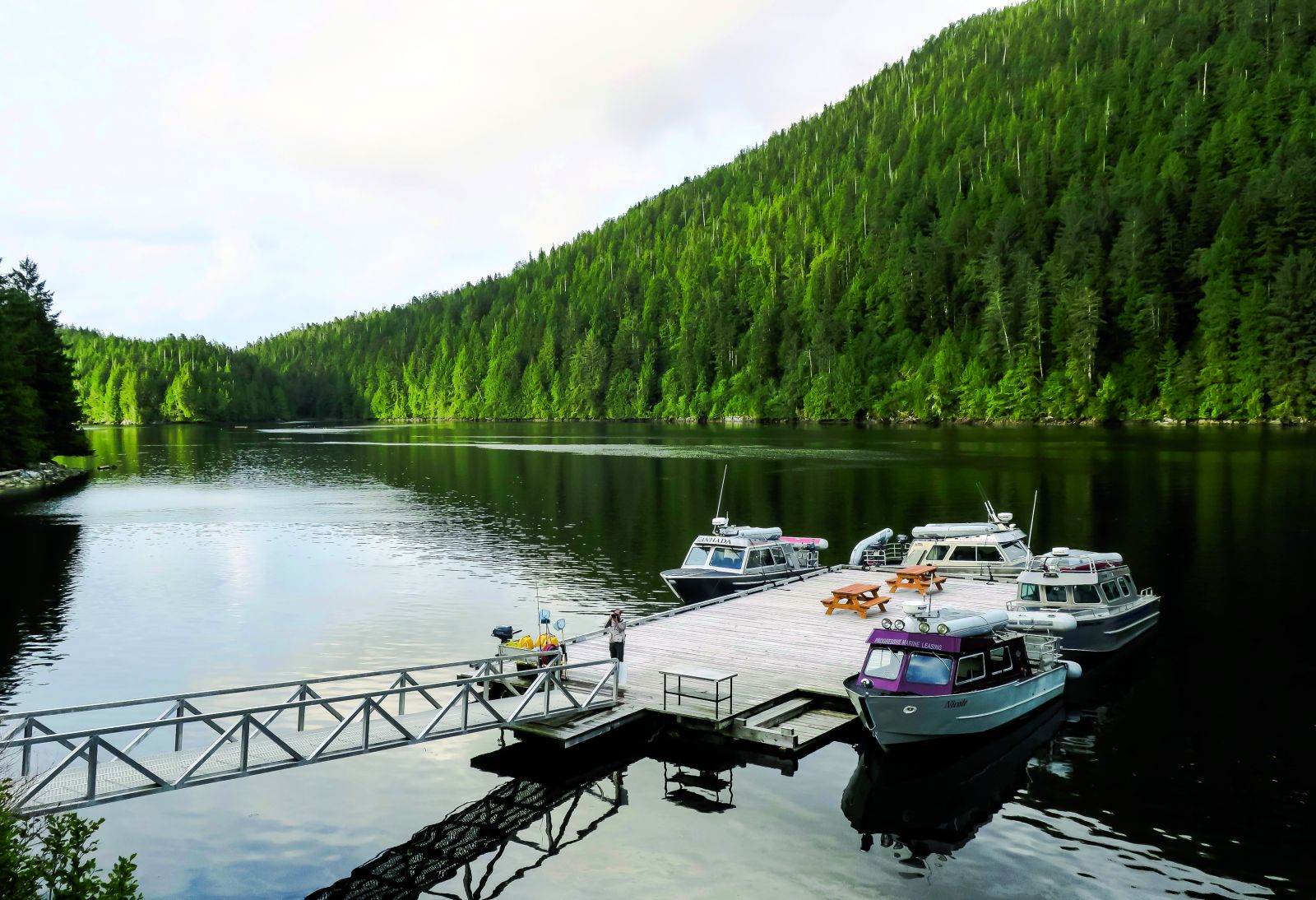
Spirit Bear Lodge boat landing
The following morning after breakfast I embarked on an exploration of the rainforest led by the lodge’s local guide. Our first destination was Khutze Inlet in the northern part of the Conservancy. It took us almost two hours on the lodge’s motor boat to reach the inlet. During the boat ride our guide informed us that the Khutze Inlet area was known as grizzly country. While three species of bear inhabit the rainforest - grizzly bear, black bear and kermode bear or spirit near, on this, we would only get to see grizzly.
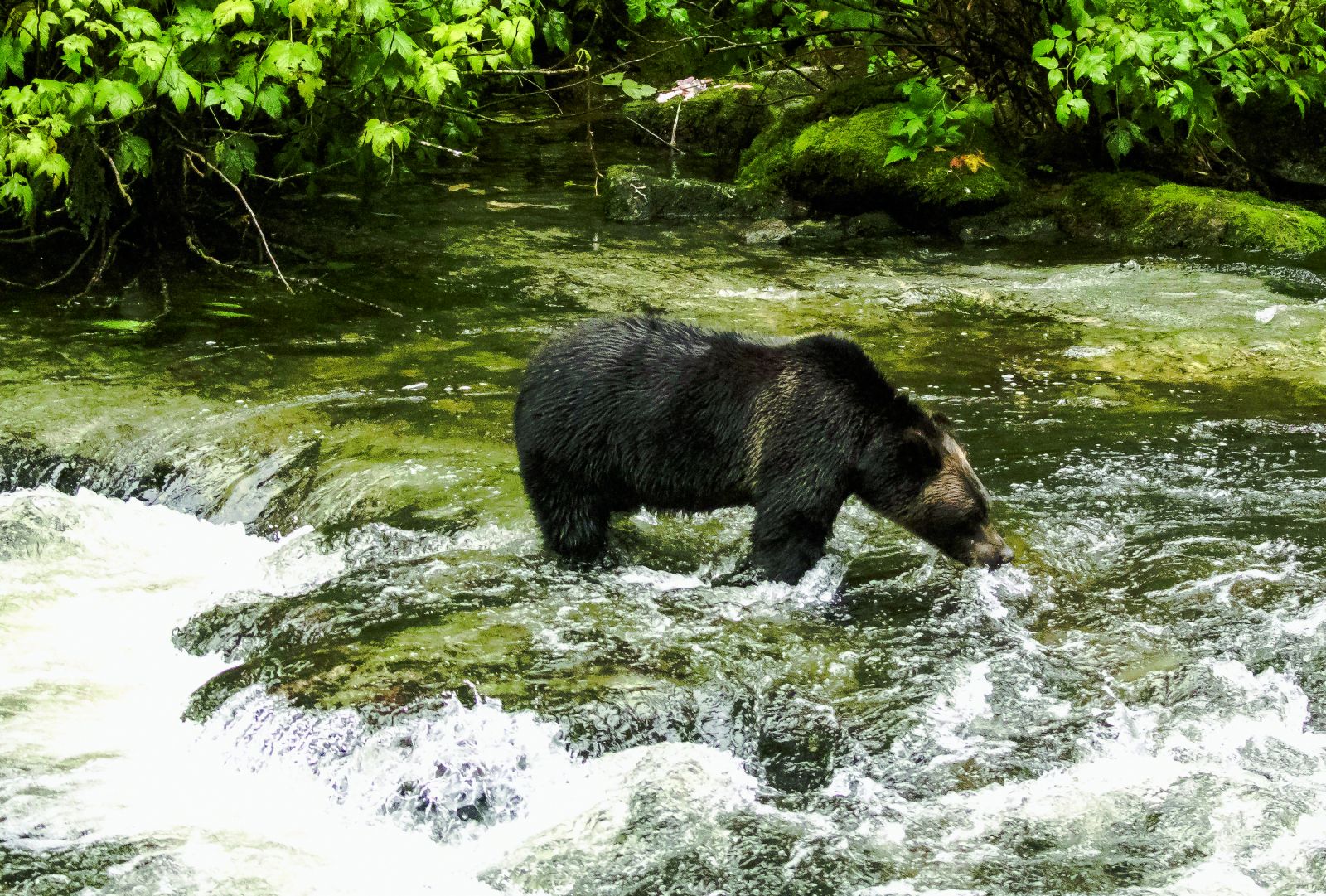
grizzly bear, black bear and kermode bear or spirit near
The captain anchored the boat near the shore where a series of beautiful waterfalls cascaded from the mountain into the estuary. The eight passengers including myself left the boat to ride in two dinghies with outboard motors to enter the inlet in search of the bear. It was indeed a pleasant dinghy ride among the pristine environment with no other human beings around except the eight of us and two guides who also handled the dinghies’ tillers.
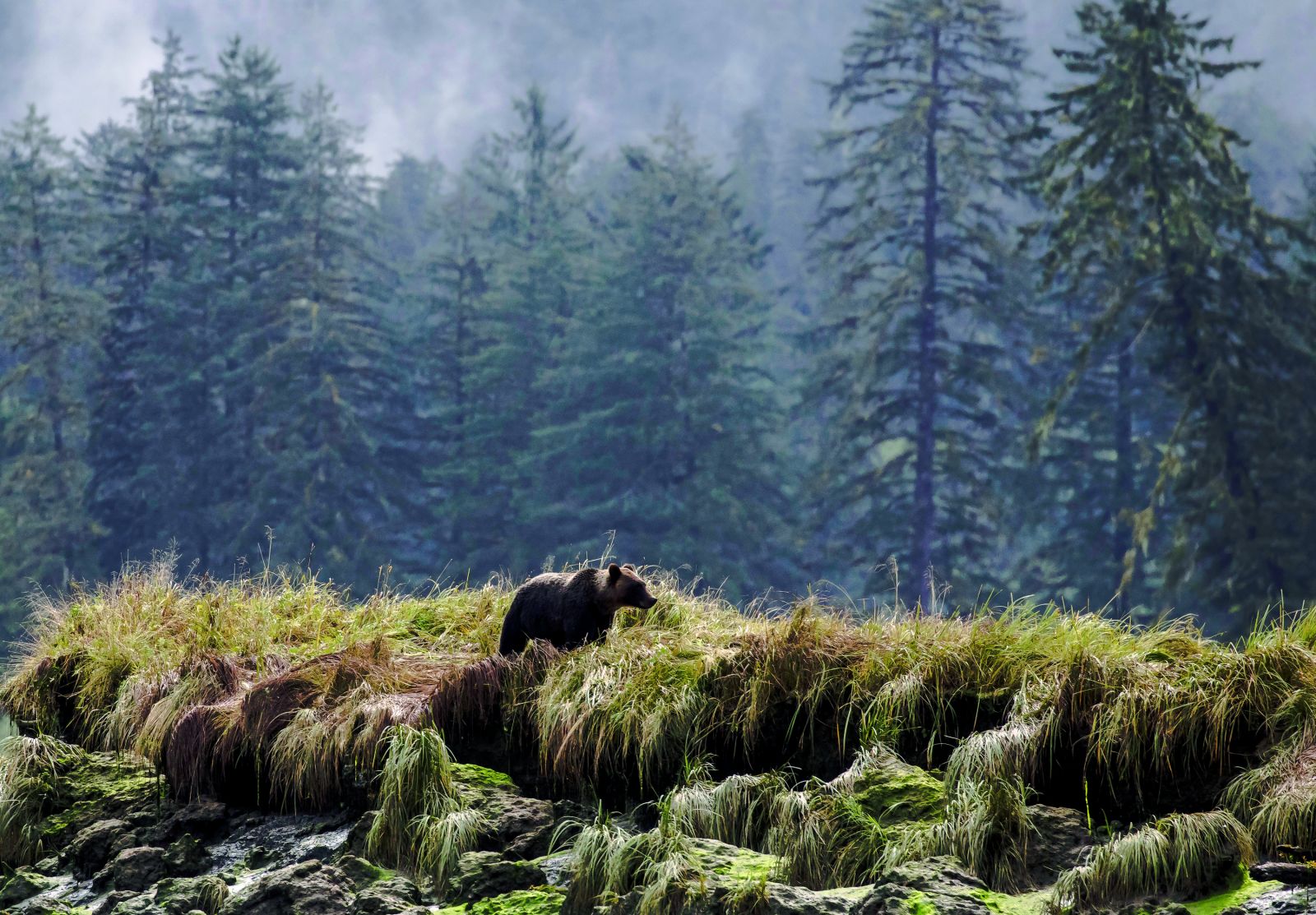
Grizzly at Khuntze
The first grizzly we spotted was a male standing on a bank searching for a salmon run. He must have found one as he dashed into the water and precisely caught one and immediately ate it. Our guide gazed at a distant shore and quietly told us, “More bears ahead!” and directed the dinghy toward it. As we approached the shore, a grizzly mother and three cubs were seen foraging together. The mother bear just caught a salmon and a cub rushed over to take its share. We spent a considerable time observing and photographing the grizzly and her cubs searching for more food. They preyed on a few more salmons then moved on. On our return to the boat, we saw two more grizzlies in the water, one catching and eating a salmon less than 20 meters from our dinghy. We ate our packed lunch on board the boat while the captain cruised slowly near the shore of the estuary looking for more wildlife.
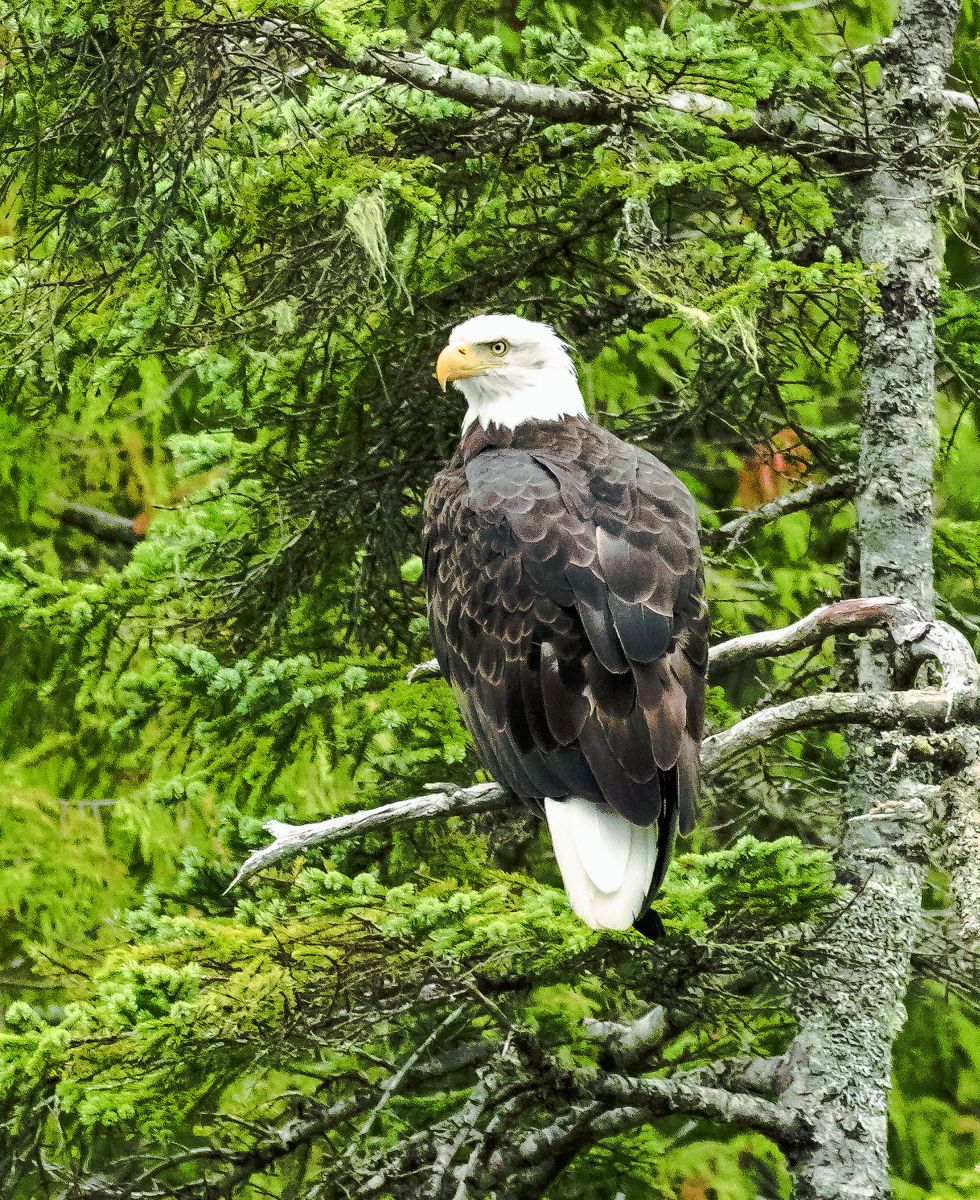
The national bird of the United States of America
We passed a large tree where a bald eagle was perched on a branch. We were excited to see this rare bird of prey which is the national bird of the United States of America. The captain brought the boat to a standstill so we could take several shots of the eagle.
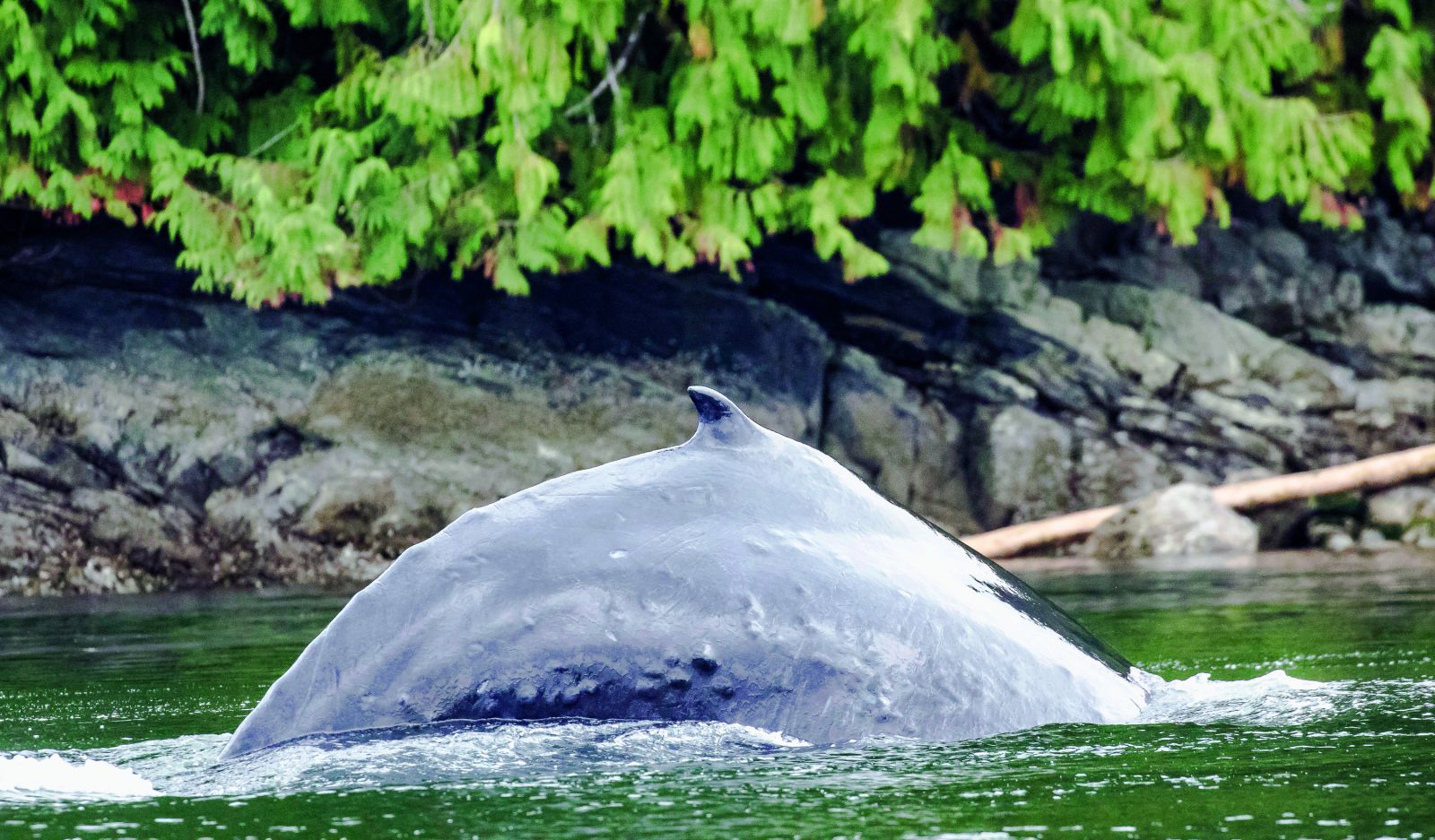
As we sailed along the estuary, the captain pointed ahead and told us that a humpback whale was feeding near the shore. We all rose from our seats in excitement and got our cameras ready. The captain directed the boat to move parallel to the shore and 100 metres away from the whale. We saw a blow shooting up 4-5 metres from the blowhole on the whale’s head which appeared above the water. As the whale began to dive head down, its body bent downward showing clearly the ‘hump’ for only 3 to 4 seconds. The last part we saw before the whole body was totally submerged was a tail with two large flukes. We then returned to the lodge satisfied with the wildlife sighting on our first day at the Great Bear Rainforest.
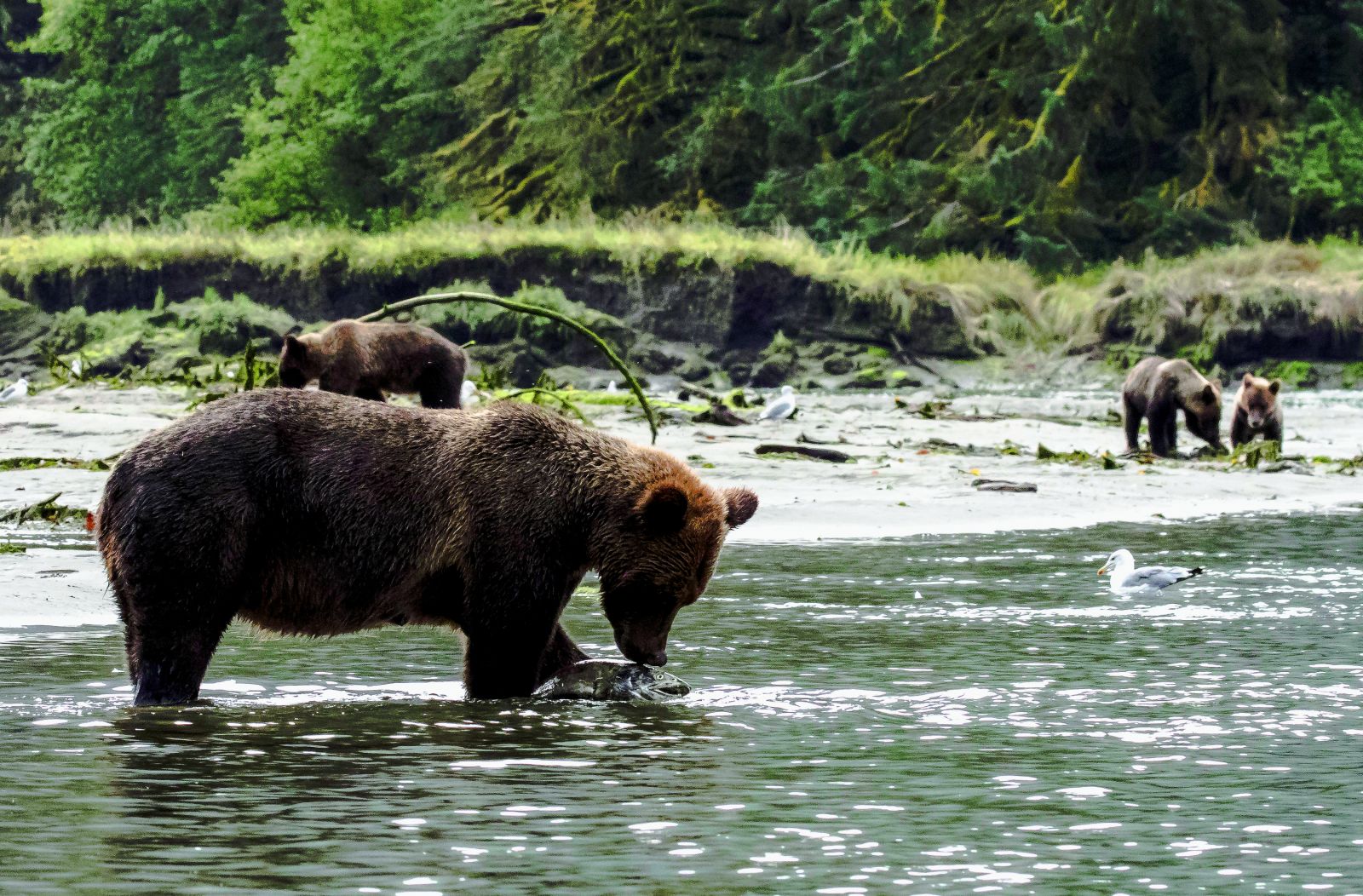
The next morning, we left the lodge amid a dark sky of rain clouds and headed to the Korich River, another salmon run site. It began to rain as we landed on the shore near the river. We were well prepared to trek in the rain with waterproof trousers, raincoats and knee-high rubber boots provided by the lodge. After a ten-minute walk we reached a large wooden platform overlooking the river offering a clear vantage view.
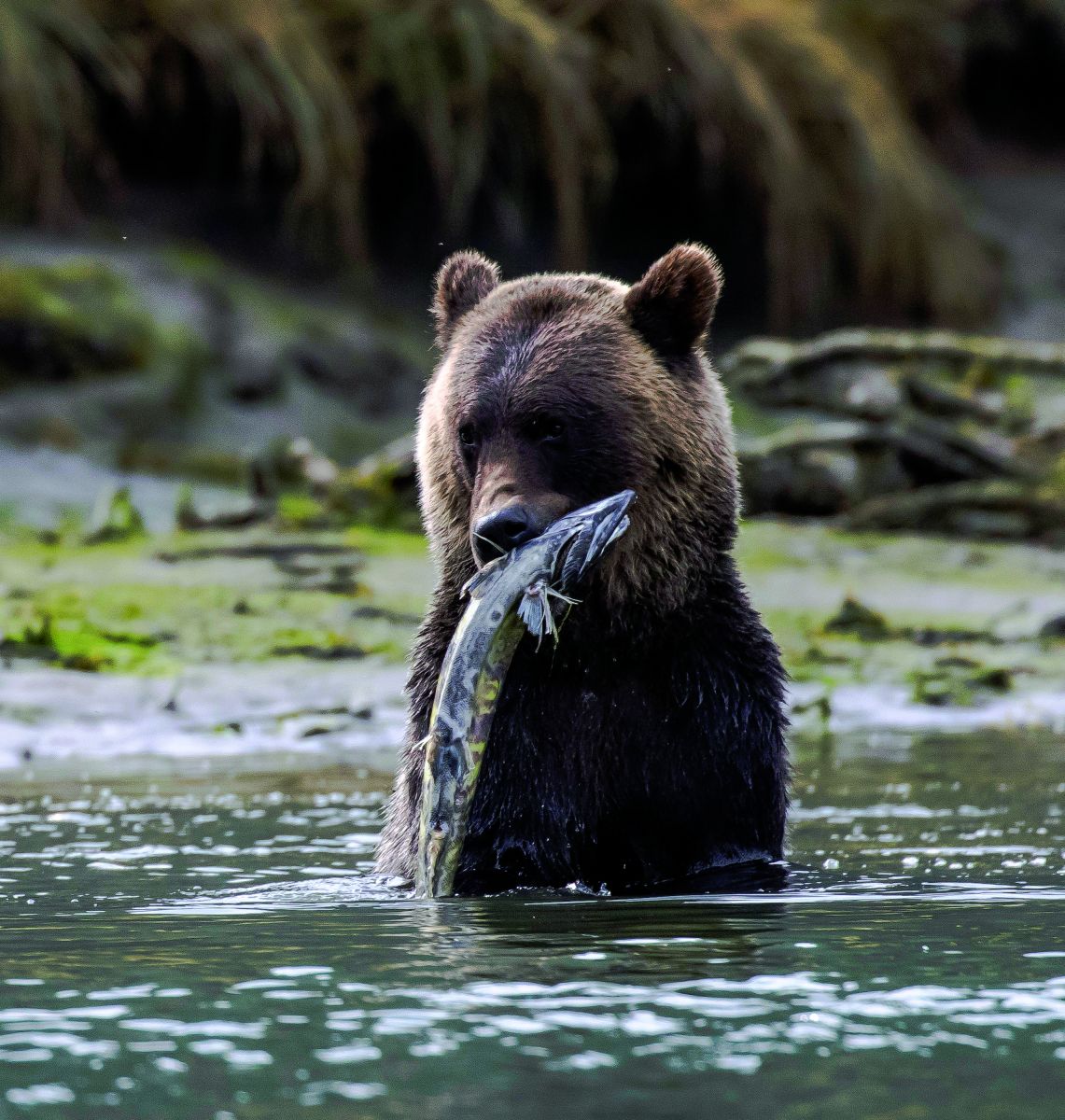
A male black bear was already present in the river busy preying on a run of salmon without paying attention to us on the platform. The bear ate a few salmon on the spot and later took some to eat on the ground next to the river. We observed the bear eating certain parts of a fish and leaving the remains scattered all over the ground. The guide explained that the bear preyed on females more than males and ate only the parts which were rich in protein such as the roe and the head. A bear needed to accumulate as much protein as possible to endure the freezing climate during its winter hibernation.
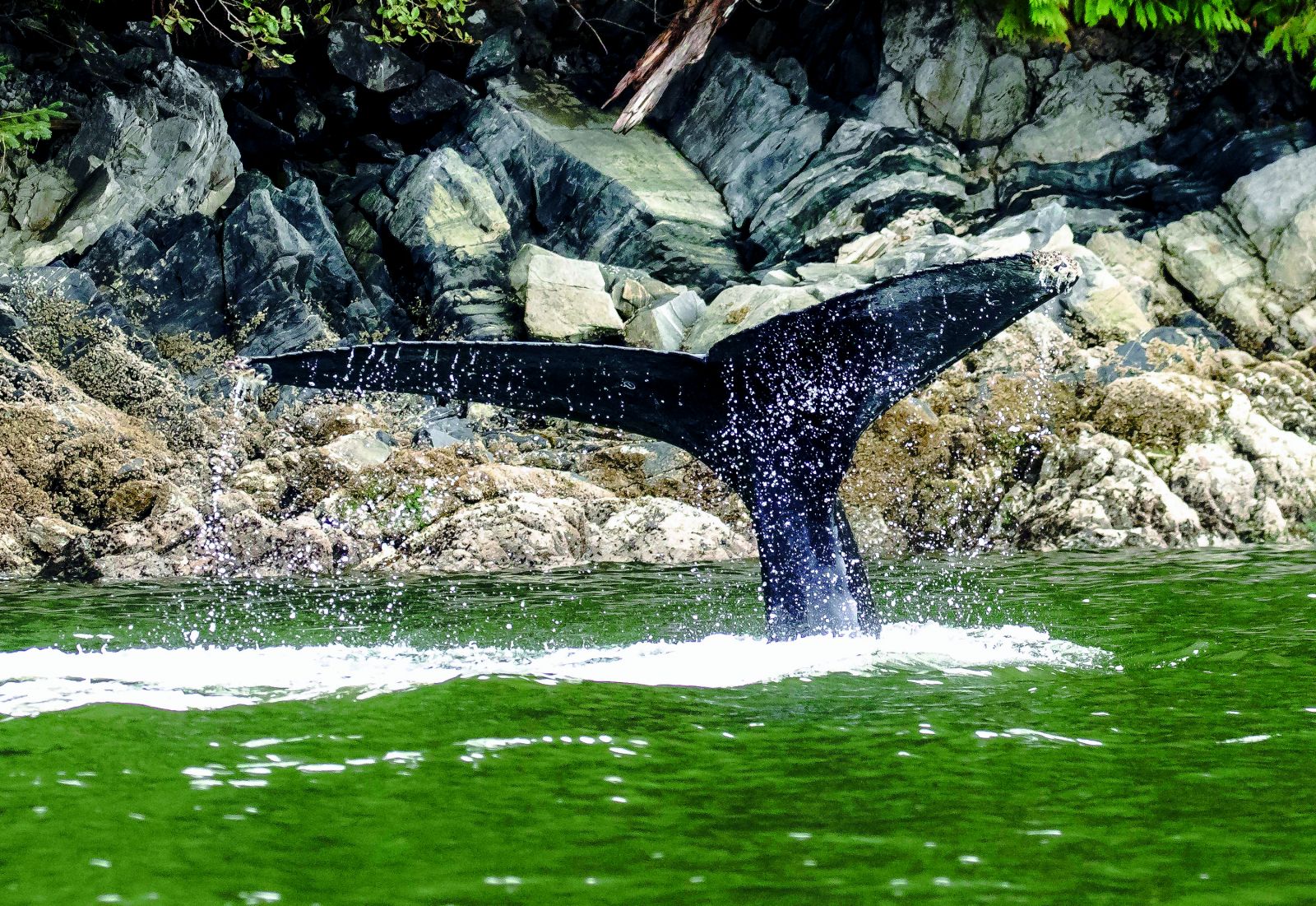
While watching the black bear foraging, I noticed two species of bird, a belted kingfisher and a mew gull, occasionally come to eat the remains of salmon the bear had left on the ground. The belted kingfisher is a large kingfisher with a body size of 48-58cm found particularly in Canada and North America but not in Thailand and Southeast Asia.
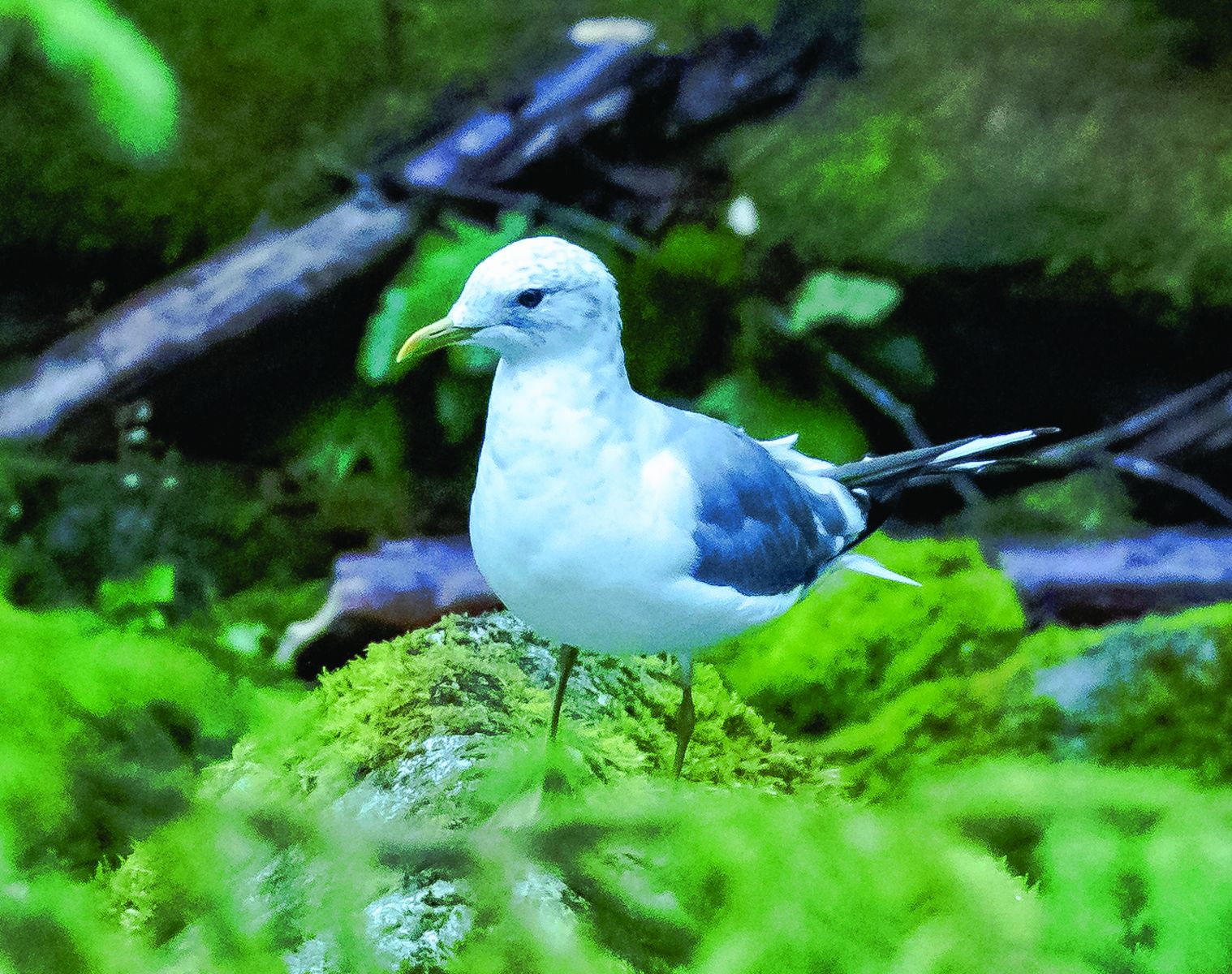
The mew gull is a small gull with a body size of 40-46 cm. The one in the photo is in breeding plumage and has a yellow bill, white head, white nape and white throat. It’s found on the west coast of Canada and Alaska. If found in Europe, the Arctic, Northern Himalayans and North Africa, it is called the common gull.
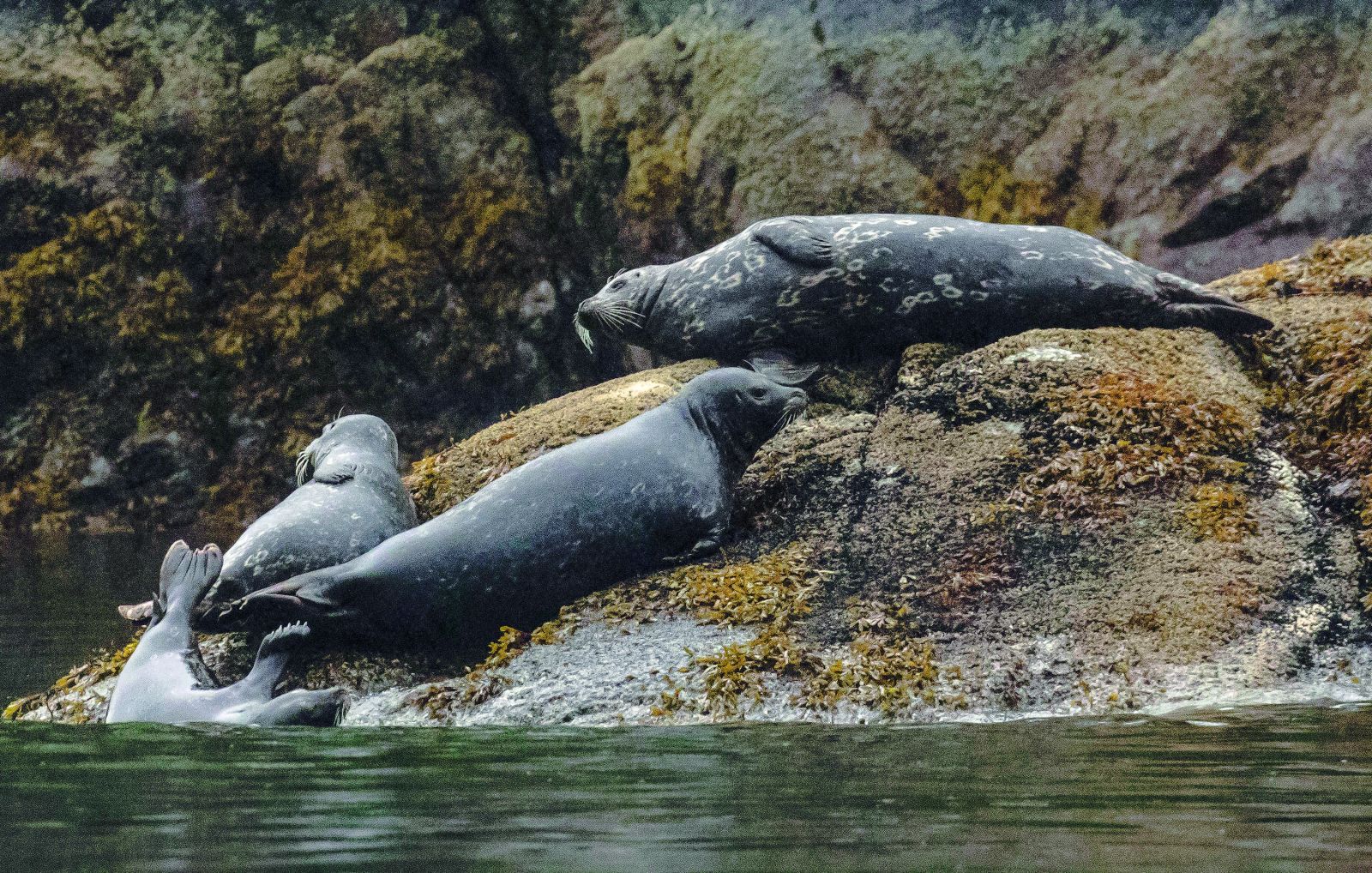
On the way back to the lodge, the captain showed us a habitat of a harbour or common seal lying in a strange position on boulders adjacent to the sea. The captain explained that although the seal’s position might look uncomfortable, it was very safe. In case a predator showed up unexpectedly, the seal could flip over immediately into the water and flee to safety.
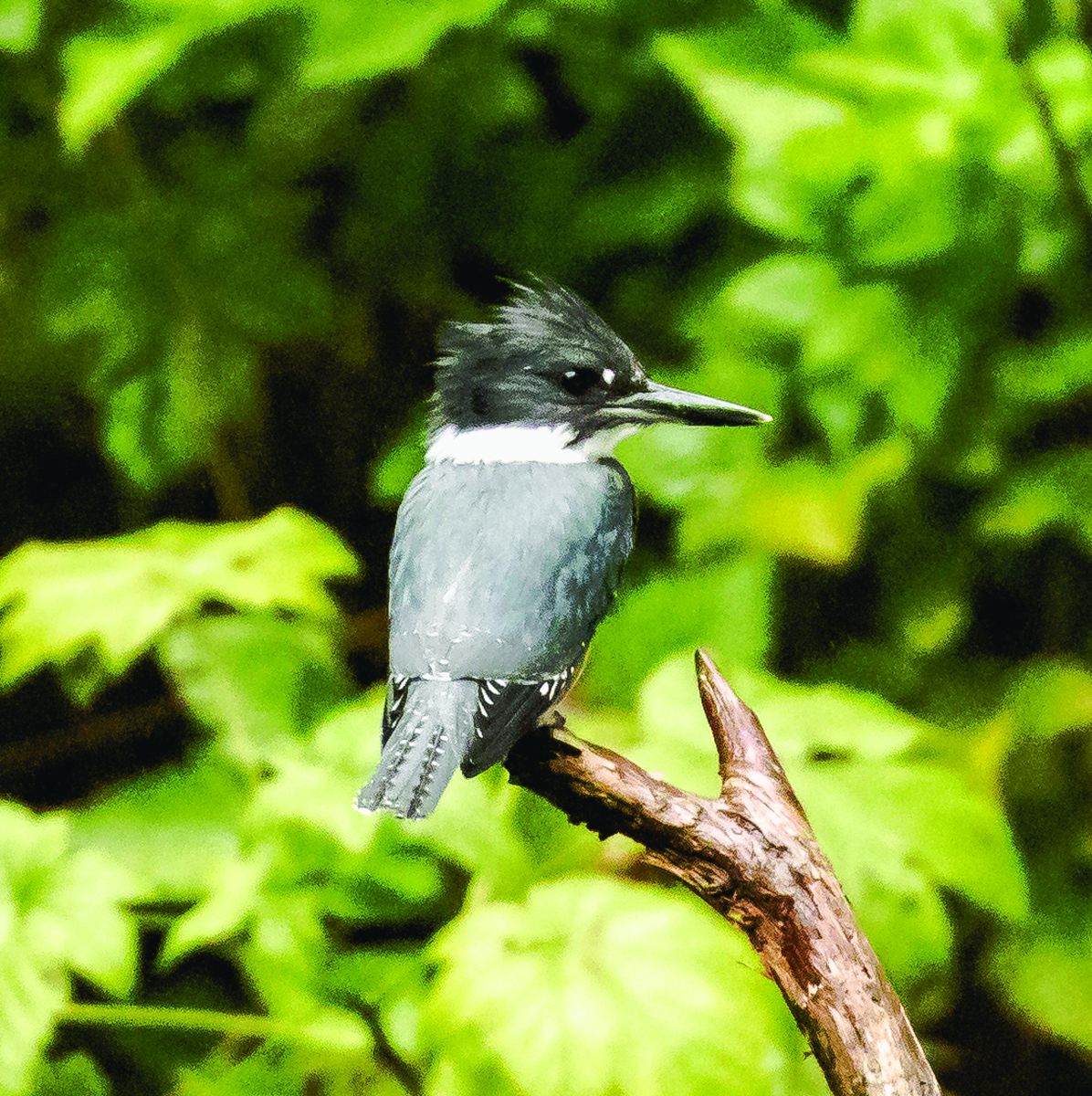
Thus, ended the second day of my exploration of the Great Bear Rainforest. However, the adventure featuring a confrontation with spirit bears and other black bears will be described in the next issue of Elite+.


